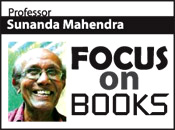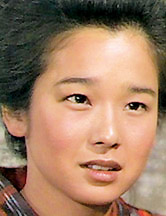Books, visuals and visionsa

Quite a number of teleplay series have been created all over the
world, based on popular as well as critically acclaimed novels. The
process has proceeded up to the point, where tele production has become
an industry that distributes the various types of teleplays as syndicate
material.
Two British tele series come to my mind. They are ‘Forsyth Saga’
based on the series of novels by John Galsworthy and ‘Middlemarch’ by
George Eliot. Some of these works have been dubbed into other languages
where the teleplays are enjoyed by different types of cultures, with
vast differences.
About two decades ago, the situation changed as
Japanese and Korean teleplays took over - or rather dominated - the
telescene by a type of alternative creations, depicting the themes where
courageous living and the struggle to exist mattered above other
trivialities like mere family sagas and girl-meets-boy type.
 |
|
Sujatha
Diyani |
The Japanese production titled as ‘Oshin’ was one such example where
our own local audience behavior was made to detour from the normal
direction. The acceptance heavily on the part of the local feminine
audience created areas of interest.
Mega tele series
One example is the introduction of the type popularly called ‘mega
tele series’. Most popular ones happened to be ‘Paba’ and ‘Olu’. Today
at the moment of writing this column, quite a number of changes have
taken place. Most locally produced mega teleplays failed to create an
impact on the audience. It is at this juncture of the culmination that
two Korean teleplays entered the telescene, as voice-dubbed series.
They were sponsored and in a sense recreated by the dubbing unit of
Sri Lanka Rupavahini Corporation, spearheaded by Athula Ransirilal (a
versatile recreative artiste of the experienced in the field of
animation and cartoons). Following closely the footpath of his
predecessor Titus Totawatta, Ransirilal excels in dubbing and animation
process which has become quite popular.
The two Korean teleseries, titled in Sinhala as ‘Sujatha Diyani’ and
‘Abheetha Diyaniya’ respectively, have created an enormous impact among
various scattered tele audience in Sri Lanka.
As an observer of audience behaviour and a spectator of the two
teleplays, I have several comments to make. Perhaps initially the impact
of the two teleplays presumably is the creative force behind the Korean
novels that paved the way. Though I have not had the chance to read the
novels titled ‘Jewel in the Palace’ and ‘Jewel in the Crown’ I had the
chance of knowing intimately the humane experiences that lay within the
pages. The themes look more historic and investigative.
Common folk
In the ultimate creation, the character portrayal of kings, queens,
palace officers, common folk, and all those old into the work are
depicted as transcending the narrow boundaries of history and culture of
a particular country. They are shown as living entities who move around
us down the centuries. The ingredients that had gone into the episodes
are drawn from politics, history, communication, administration, family
bonds, love and romance etc. They are eternal factors that matter as
aesthetic expression.
 |
|
Oshin |
 |
|
Abheetha
Diyaniya |
The clarity of speech mannerisms, as transferred from language to
another is one of the most sensitive factors in both series, for which
the above cited unit of execution has to be commended. Verbal
expressions fused into visuals matter gravely in the process. The
training of speech communication has gone a long way. Some of the
skilled radio artistes have been selected to interpret the verbal
message to its fullest sense. Thus regardless of the ‘alienation’ in a
culture the central human experience has been transferred perceiving the
strength of visuals and the vision behind them.
Needless to say, watching these two teleplay series may pave the way
to gain a new interest in some creative nuances of the indigenous roots
and rediscover for the betterment of the creative communication via a
gigantic media like television. Our own teleplay serial creators ought
to learn lessons from others in order to see a wider horizon as against
the narrow domestication they delve in today.
I am not going to belittle our own teleplays such as Bogala
Saundiris, Gamperaliya, Kaluvara Gedara, Amba Yaluwo and Amarapura. All
I emphasize is the need to rethink what the strength of the mini screen
means to us today.
The creative influence may be good if achieved on eth critical
viewing, which should be taught from projecting a widely accepted good
works.
([email protected])
|





